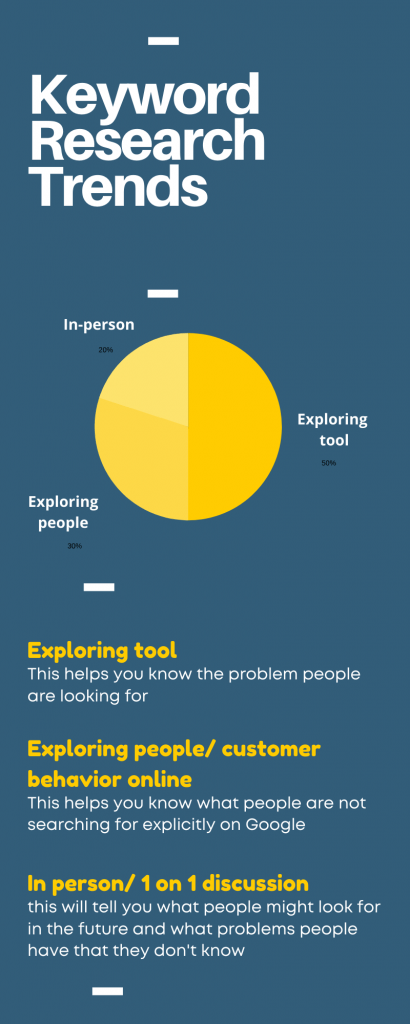
Is your organization struggling to maintain a healthy flow in its communication structure? If so, you might want to start by ensuring that you and your team are on the same wavelength when it comes to your company’s goals. Like John Rampton says,
“I’ve made it clear that I have an open-door policy – which means that the employee can tell me anything that is on their mind.”
One way to do that is by creating an employee handbook, clearly stating the company policies, objectives, and regulations that will act as a binder to keep everyone on the right track. Let’s dive deeper into the conversation to understand this better. But first, let’s sift through a few basics.
- Why You Need an Employee Handbook
- Laying down the right expectations
- Welcoming new employees
- Comes in handy while resolving disputes
- Harboring a positive work atmosphere
- Sections You Need in the Employee Handbook
- Welcome message
- Company introduction
- All things legal
- Finances, rewards, and recognition
- Final Thoughts
Why You Need an Employee Handbook
Table of Contents
The most important function of an employee handbook is to streamline the communication between an employer and employee and to encourage a transparent business model.
This helps new employees get comfortable with the company structure and aids the existing workforce to be better at communicating their issues and doubts.
Here are a few other benefits of having an employee handbook.
1. Laying down the right expectations
Your employees need to be well versed on their roles and responsibilities and should also be in a position to accept full accountability for their actions.
An employee handbook manages that by being a valuable resource of information regarding policies, roles, missions, values, and objectives. It proactively ensures that:
- The employer and the employee are on the same page in terms of roles and expectations.
- There’s a smooth flow of communication between hierarchies.
- Employees feel comfortable and confident while voicing their issues.
- Everyone feels valued and equal in the organization.
More often than not, you might come across an uncomfortable situation with your employees, especially if you deal with a remote workforce. An employee handbook comes to your rescue in such situations by becoming your ally in clearing up bad air and making things seamless and positive at the workplace.
2. Welcoming new employees
When a new employee joins the team, their head is full of questions you might not have the right answers to.
But, with the help of an employee handbook, they can easily navigate these doubts and will also be in a much better position to understand the company structure.
Additionally, it also helps in:
- Laying down important company policies
- Talking about expected employee behavior
- Making legal and financial terms transparent
- Helping a new employee understand how to communicate between hierarchies
- Talking about the person of interest in case of a dispute
- Laying down essential company clauses
Apart from maintaining a smooth onboarding process, an employee handbook also clearly demarcates the policies regarding exit procedures that ensure an employee bids goodbye to the organization on a positive note.
3. Comes in handy while resolving disputes
While working on a team, a difference of opinion is inevitable. In a situation like this, an employee handbook acts as your gospel truth by outlining all the intricacies involved when it comes to legal matters.
It tells you how to proceed, keeping in mind the interests of both parties involved and the first step in the process.
Here’s what you need to include in this section to ensure that things are handled smoothly.
- Compliances and state laws
- Non-disclosure agreements
- Legalities associated with employee contracts
- Labor laws
- Social media policies
- Policies related to the use of technology
This is also an important document to establish credibility for your company, since it talks about you as an established, law-abiding institution that believes in being fair in all its undertakings.
4. Harboring a positive work atmosphere
For your employees to contribute to the company in the best way possible, they need a clear headspace free of any communication conflicts.
An employee handbook holds relevance here by streamlining the process of communication and touching on deep topics related to grievances, legalities, organizational goals, and objectives.
This reassures your employees, and they can concentrate better on their work. This leads to a workplace that fosters a community of motivated employees who work with twice the determination.
Drafting a company handbook requires in-depth research and a lot of time. It is recommended to create personalized emails for your employees, asking them for their valuable insights, and to use those to direct your handbook content accordingly. You can use a drag-and-drop email builder to save time.
Now that you’re set in the right direction, let’s find out about some essential information you need to add as part of your employee handbook.
Sections You Need in the Employee Handbook
There is no hard and fast rule as to what you need to include in an employee manual, but there are a few things that need a spot right on the front pages.
Let’s help you get those on point.
1. Welcome message
A welcome message is essentially a short and crisp statement from a senior-level leader, welcoming employees, new and old, to explore the handbook further.
This message goes a long way in connecting employees at all levels with their leadership and making their ideas more accessible.
Here’s what you need to do to ensure that this message is absolutely on point.
- Keep the language simple and easy to understand.
- Use first-person language and direct the content to the employees.
- Use a positive tone and make the message sound happy and warm.
- Keep it short and crisp.
This is the first thing employees will read as soon as they have access to the handbook; ensure that it’s error-free and engaging so they feel compelled to read the rest.
You can also use this space to take your new joiners through their first-day journey, like how Valve does it in their handbook.
2. Company introduction
The next section you need to draft relates to introducing your company more extensively by talking about policies, teams, and so on. This is the section that will come in handy while managing grievances and disputes.
Also, it is the most referred-to section in the entire book; therefore, it is recommended to take proper guidance while drafting it.
A few things to cover here are:
- Brand image guidelines
- Mission and vision statement
- Team structure, project management principles, and office hours
- Company culture (take hints from Netflix’s culture page)
- Divisions between teams
- Onboarding and exiting procedures
- Documentations
- Privacy statements
- Leave and absence policies
Every organization is different, so this section may vary from company to company. You need to understand what structure suits your company best and then take it from there.
3. All things legal
Cover all the legalities in this section to maintain the utmost transparency and to safeguard your company’s interest in case there’s a dispute with an employee or even a stakeholder.
Here’s an idea of what you need to cover here:
- Equal opportunity clause
- Disability clause
- Diversity and Inclusion statement
- Corporate Social Responsibility
- State and national policies
- Workplace harassment clause
Talk about each of these points in-depth and cover every angle. Use an expert’s guidance to draft your legal section, as it needs to be error-free or it might backfire.
Circulate the same over an email using a good email marketing tool so everyone has access to it as a separate document.
Pro tip: Consider the software you’re using while employing this technique to avoid hang-ups. For example, if the majority of the team uses iOS, use an email client for Mac for seamless distribution.
4. Finances, rewards, and recognition
Apart from your work culture and workplace infrastructure, this space is one of the main reasons an employee chooses you over another opportunity.
Be as descriptive as you can be, and make this the most appealing section of the entire book. This is also a good time to talk about any incentive and employee recognition programs you have in place to further motivate your employees to perform better.
It is recommended to break the information in this section into smaller parts so everything is laid out in a clear fashion, leaving no room for confusion.
You can add an extra section to the list wherein you can talk about all the employee benefits you offer, like medical insurance, financial aid, tax rebates, and so on. Just keep in mind that the more information you share in your handbook, the better.
Leverage technology to have a copy of the handbook mailed to your employees, and ask for a necessary acknowledgment receipt so you know that they’ve read and received it and are aware that such a document exists.
Final Thoughts
All the above points will get you going in the right direction of drafting your employee handbook.
However, your first step is to determine how you want to present it, what kind of language you want, where you want your content to be directed, and most importantly, what information you are comfortable sharing.
Once you have it figured out, make sure you take the time you need to hire the right person for the job, and you’re all set. Just keep updating the handbook as and when new policies come into play, and always stay on top of things.






